The aardvark (Orycteropus afer) is a distinctive mammal native to Africa. They are widely distributed south of the Sahara from Senegal to Ethiopia to South Africa, including the Congo Basin. Meanwhile, they are absent from the Sahara and Namib deserts; coastal areas of Namibia, Ivory Coast, Ghana; and Madagascar. Local population distribution and density, however, are largely determined by the abundance and distribution of both suitable habitat and prey.
The aardvark is the sole surviving member of an entire order of mammals, the Tubulidentata. This makes it the most evolutionarily distinct mammal on the planet! Their closest living relatives are over in the Afroinsectivora clade, which includes the elephant shrews, golden moles, otter shrews, and tenrecs.
Because aardvarks carry so much unique evolutionary history in their genes, every baby born is special and ensures the continuation of this incredible species! Here are 10 cute pictures and 6 cool facts about baby aardvarks sure to brighten up your day.
#1 Aardvark Mothers Are Pregnant For About 7 Months and Usually Have Just One Baby at a Time

Newborn aardvarks weigh about 1.3 – 2.0 kg (2.9 – 4.4 lbs).
©Elias N. / CC BY-SA 3.0 – License
Aardvarks almost always give birth to just a single young at a time, with twins rare. The newborn is pink, wrinkly, and hairless; hair does not start growing until about 5 – 6 weeks old. However, it is born with its eyes open.
#2 Baby Aardvarks Are Raised Solely By Their Moms
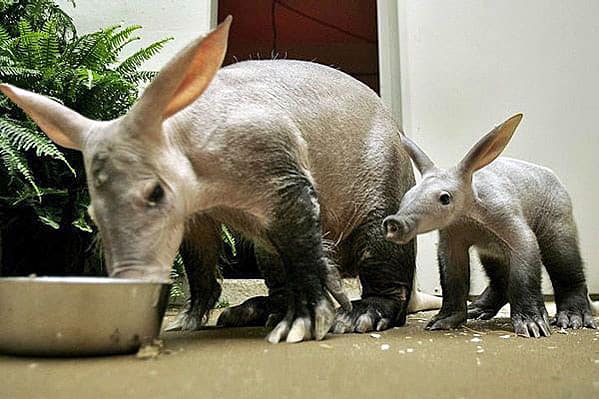
Once its hair starts growing in, a baby aardvark looks like a miniature version of its mom!
©Scotto Bear from North Beach, MD, USA / CC BY-SA 2.0 – License

The aardvark’s name comes from the Afrikaans for “earth pig,” but the babies are usually called cubs or calves rather than piglets.
©Kushan Nirmal 369/Shutterstock.com
Aardvarks are generally solitary creatures, except for when mothers have young. Adult males and females only come together briefly during mating season, with the males not involved in raising the young thereafter. A baby aardvark spends its first two weeks of life safe in the burrow, after which it will begin to accompany its mother on her nightly feeding trips to search for ants and termites.
#3 Baby Aardvarks Are Weaned Around 3 – 4 Months Old
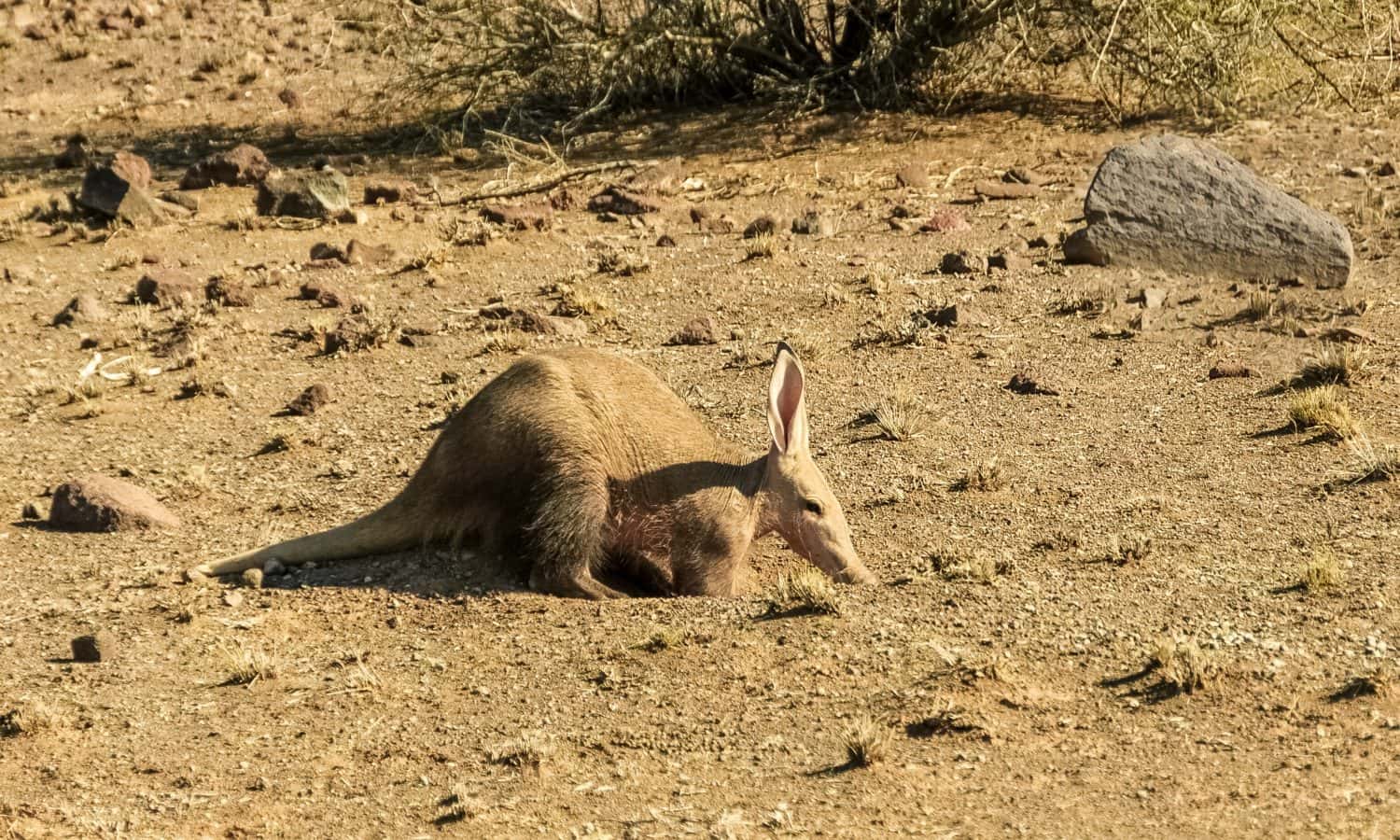
Aardvarks are myrmecophagous — that is, they eat termites and ants.
©Kushan Nirmal 369/Shutterstock.com
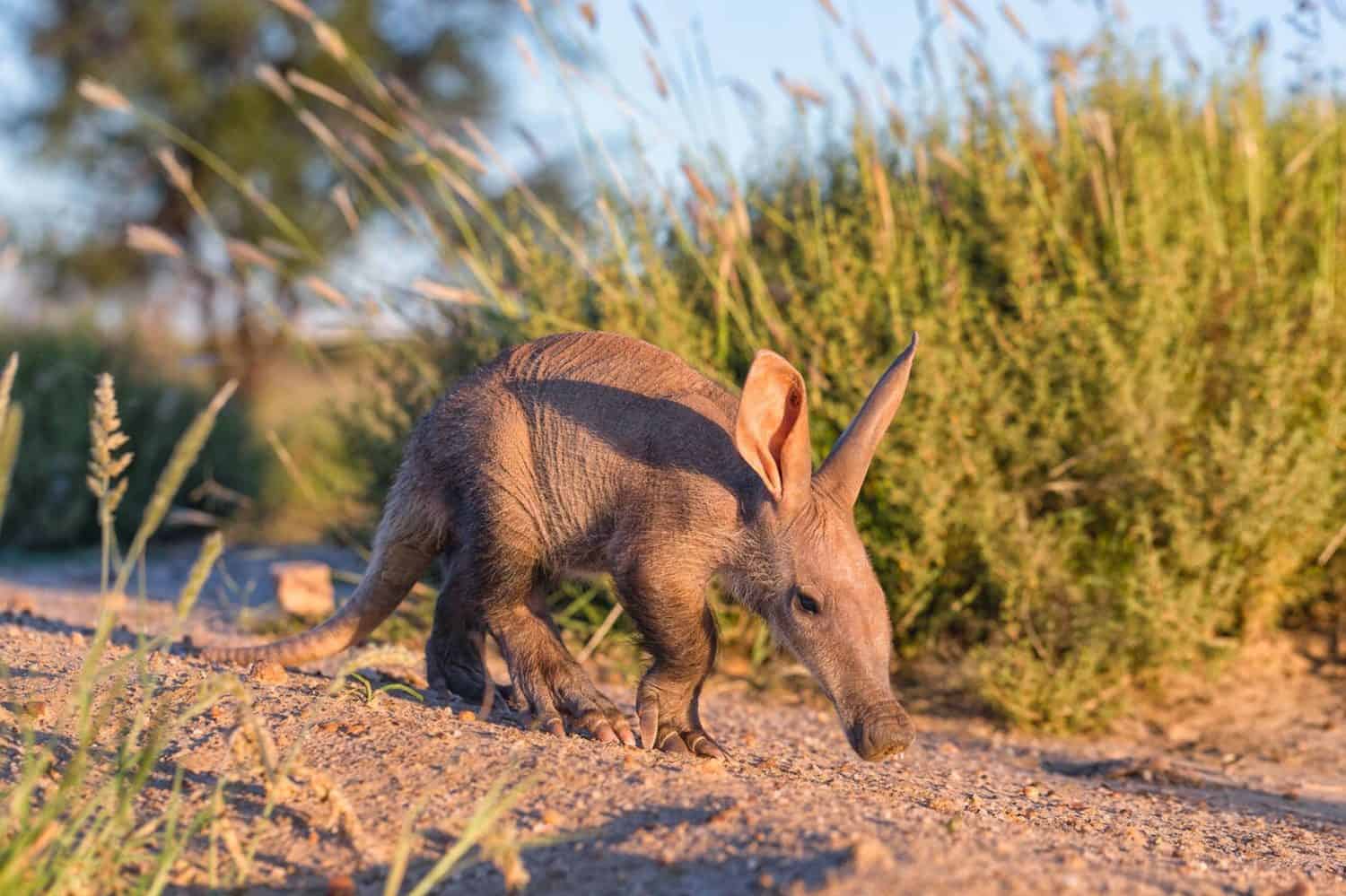
Aardvarks are mostly nocturnal, but can sometimes be spotted out and about during the day.
©AdamZ9/Shutterstock.com
Like all mammals, baby aardvarks start out life by drinking mom’s milk. However, they will begin munching on ants and termites alongside their mother and wean off milk around 3 to 4 months of age.
#4 Baby Aardvarks Can Dig Their Own Burrows When They Are Around 6 Months Old

Aardvarks dig burrows to both find food and to use as shelter.
©AdamZ9/Shutterstock.com
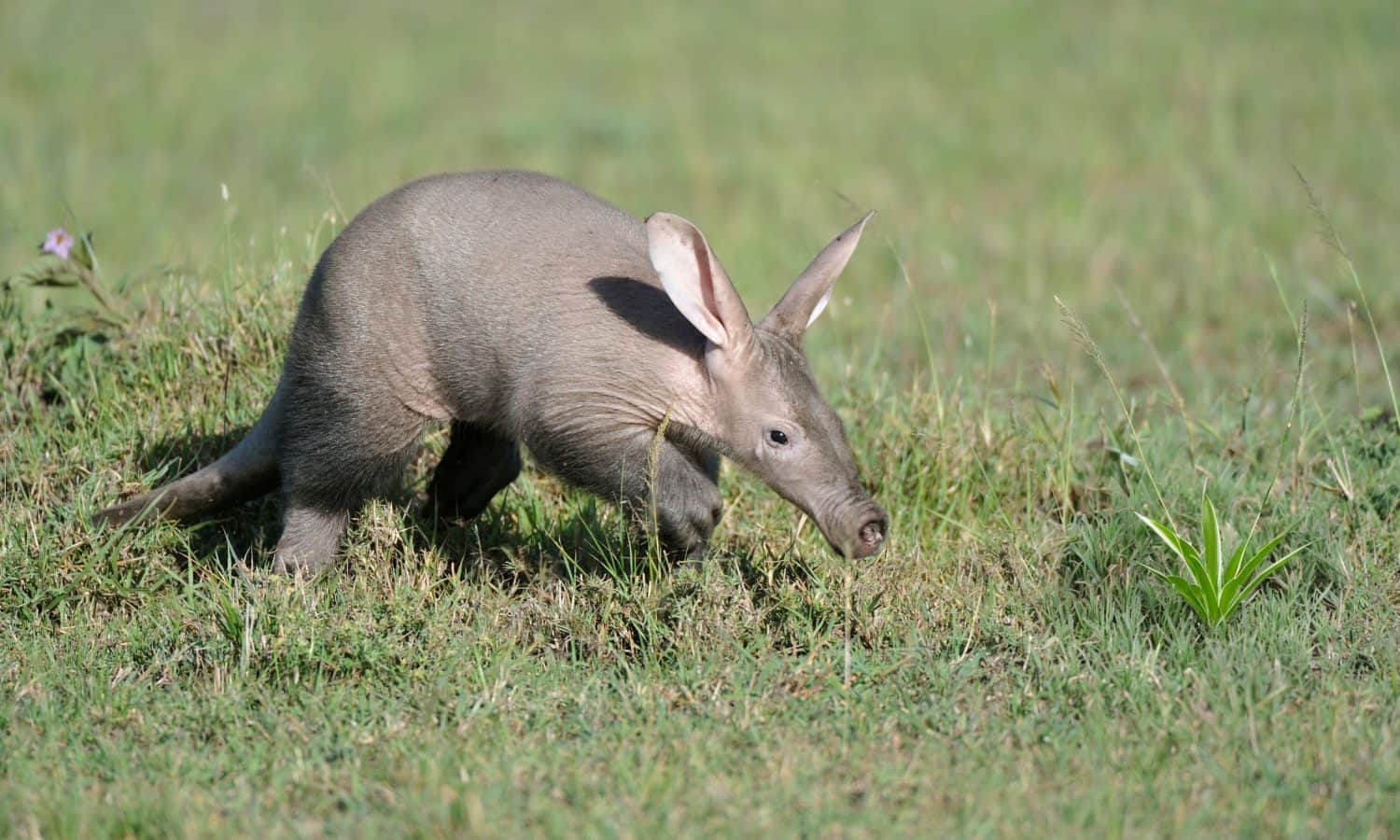
Predators of aardvarks include lions, leopards, cheetahs, hyenas, African painted dogs, and humans.
©Kushan Nirmal 369/Shutterstock.com
Even though young aardvarks can live independently once they can both dig their own burrows and feed themselves, they usually still stay with their mothers until the following mating season before striking out on their own.
#5 Baby Aardvarks Reach Adult Size By Around 1 Year Old
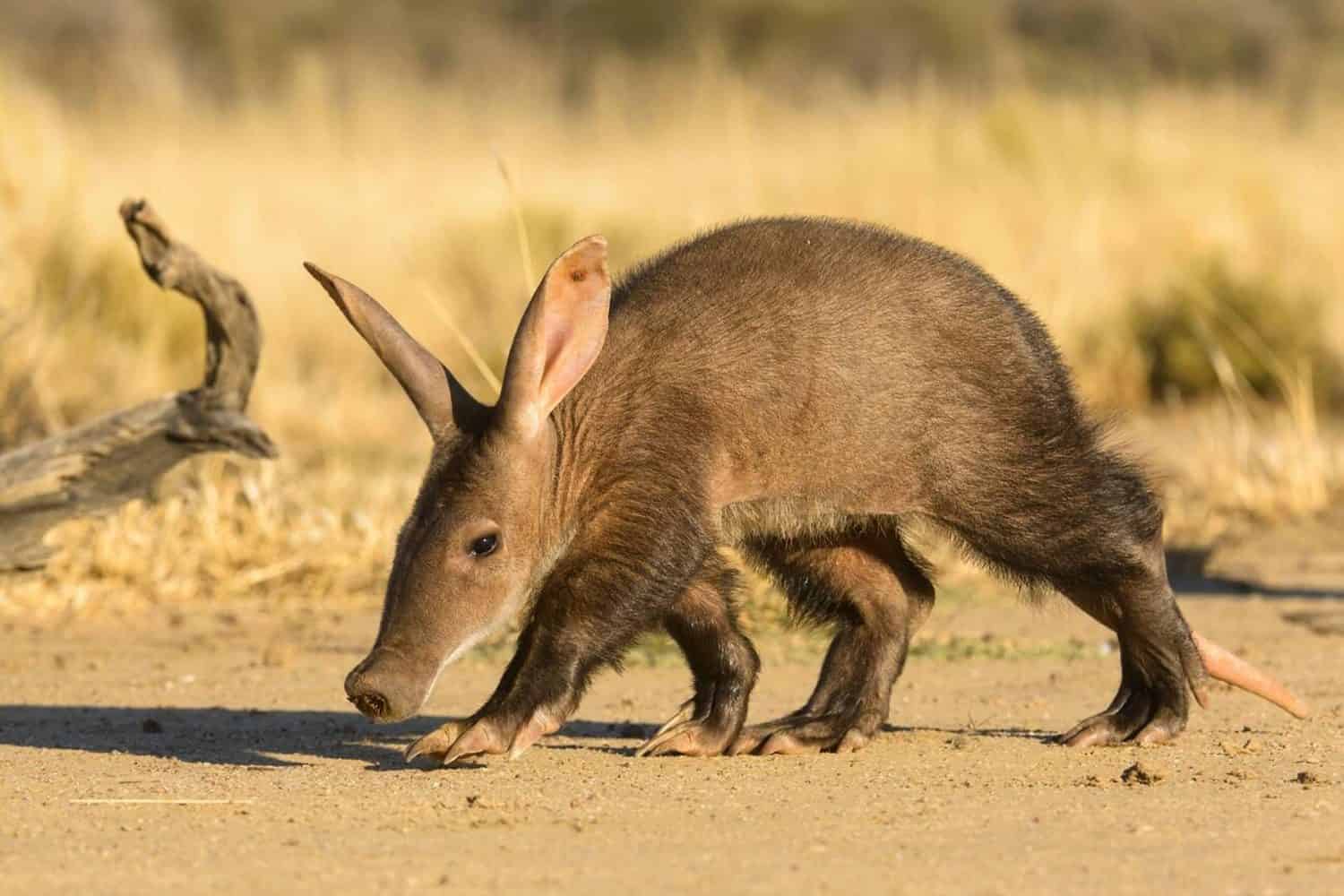
Aardvarks live in a wide range of suitable habitats, including semi-arid Karoo, grasslands, savannas, rainforests, woodlands, and thickets.
©AdamZ9/Shutterstock.com
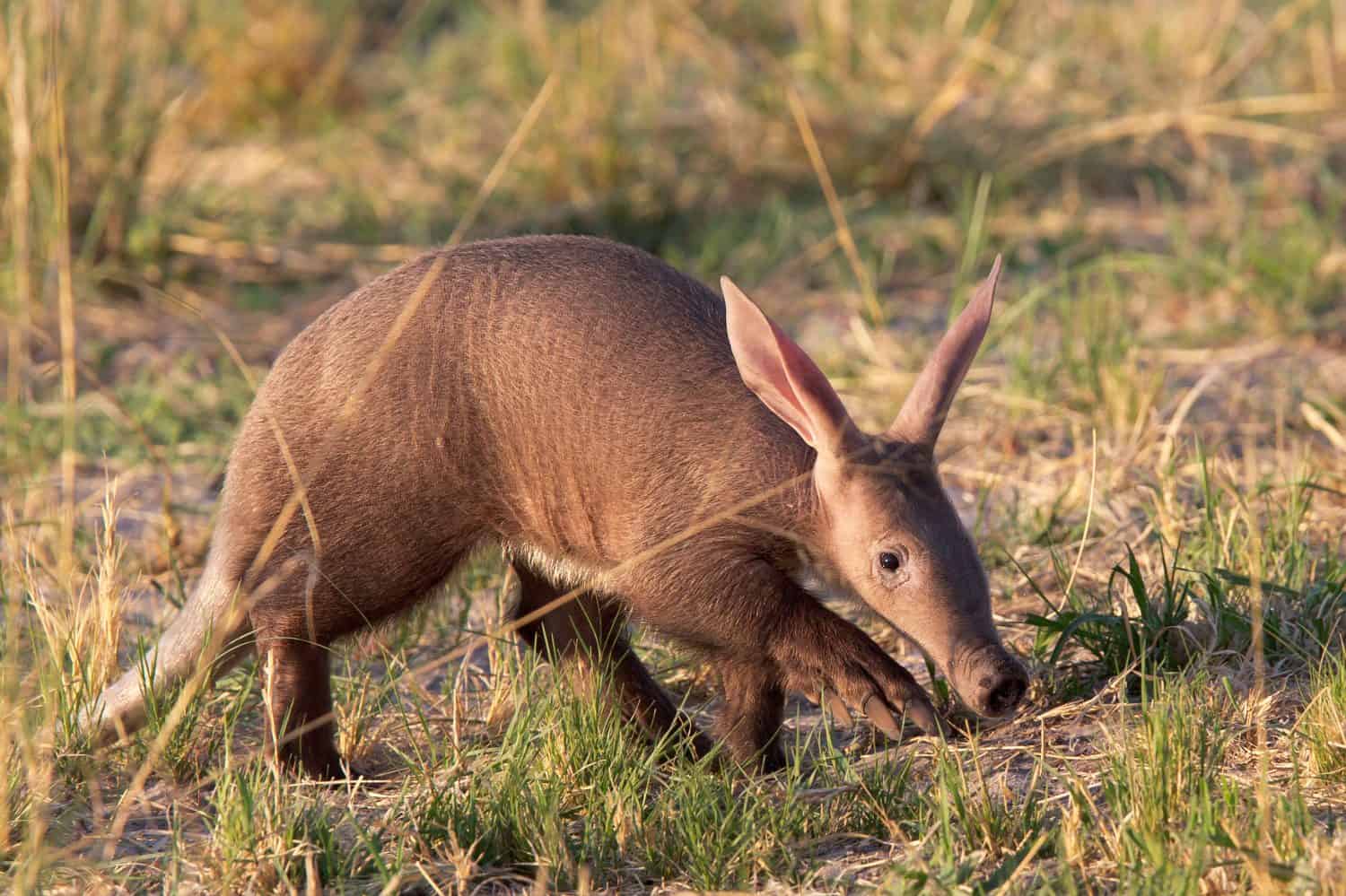
Aardvarks have acute senses of hearing and smell, but relatively poor eyesight.
©Thomas Retterath/Shutterstock.com
Although they are fully grown after about a year, aardvarks don’t reach sexual maturity until about 2 years old. A fully grown aardvark weighs anywhere from 40 – 100 kg (88 – 220 lbs) and measures 1.4 – 2.2 m (4.6 – 7.2 ft) long, with males a bit larger and heavier than females on average.
#6 Aardvarks Have An Average Lifespan of About 18 Years in the Wild and 23 Years in Captivity

Aardvarks are often kept in pairs or family groups in captivity, an arrangement not replicated in the wild.
©AdamZ9/Shutterstock.com
The longest-lived aardvark on record lived to the impressive age of 29 years and 9 months!
Summary
Aardvarks have a gestation of about 7 months and usually give birth to a single pink, wrinkly, and hairless young. Baby aardvarks are raised solely by their mothers. They leave the burrow after 2 weeks, are weaned around 3 – 4 months old, and can dig their own burrows around 6 months old, but usually still stay with their mothers until the following mating season. They grow to adult size by around 1 year old and reach full maturity around 2 years old. Aardvarks live an average of 18 years in the wild and 23 years in captivity, with the longest-lived individual on record living to nearly 30 years.
The photo featured at the top of this post is © AdamZ9/Shutterstock.com
Thank you for reading! Have some feedback for us? Contact the AZ Animals editorial team.






